Hva er et tankekart?
Tankekart er en enkel måte å brainstorme tanker organisk uten å bekymre seg for orden og struktur. Det lar deg visuelt strukturere ideene dine for å hjelpe deg med analyse og tilbakekalling.
Lag tankekartet ditt i dag!
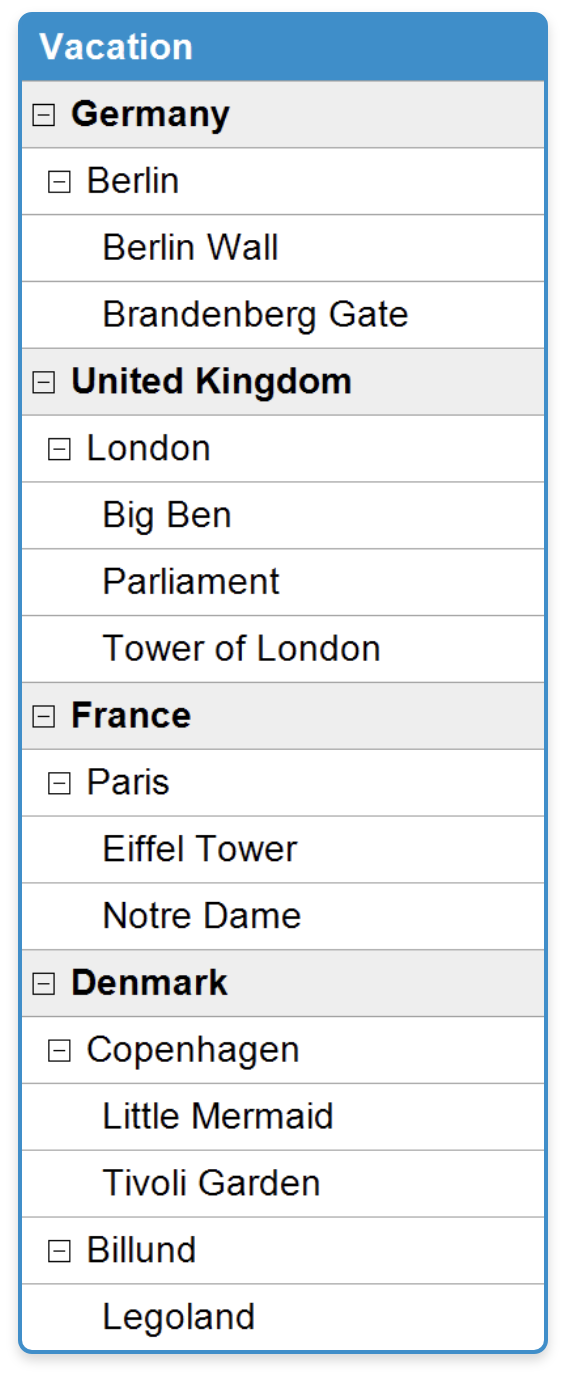
Konseptet med tankekart
Tankekart er et diagram for å representere oppgaver, ord, konsepter eller elementer knyttet til og ordnet rundt et sentralt konsept eller emne ved hjelp av et ikke-lineært grafisk oppsett som lar brukeren bygge et intuitivt rammeverk rundt et sentralt konsept. Tankekart kan gjøre en lang liste med monoton informasjon til et fargerikt, minneverdig og høyt organisert diagram som fungerer i tråd med hjernens naturlige måte å gjøre ting på.
Her er et eksempel på en oversikt over ferieplaner. Det tar bare noen få øyeblikk å gå gjennom listen over steder og aktiviteter. Men når du kommer til bunnen av oversikten, husker du til og med hva du leser øverst?
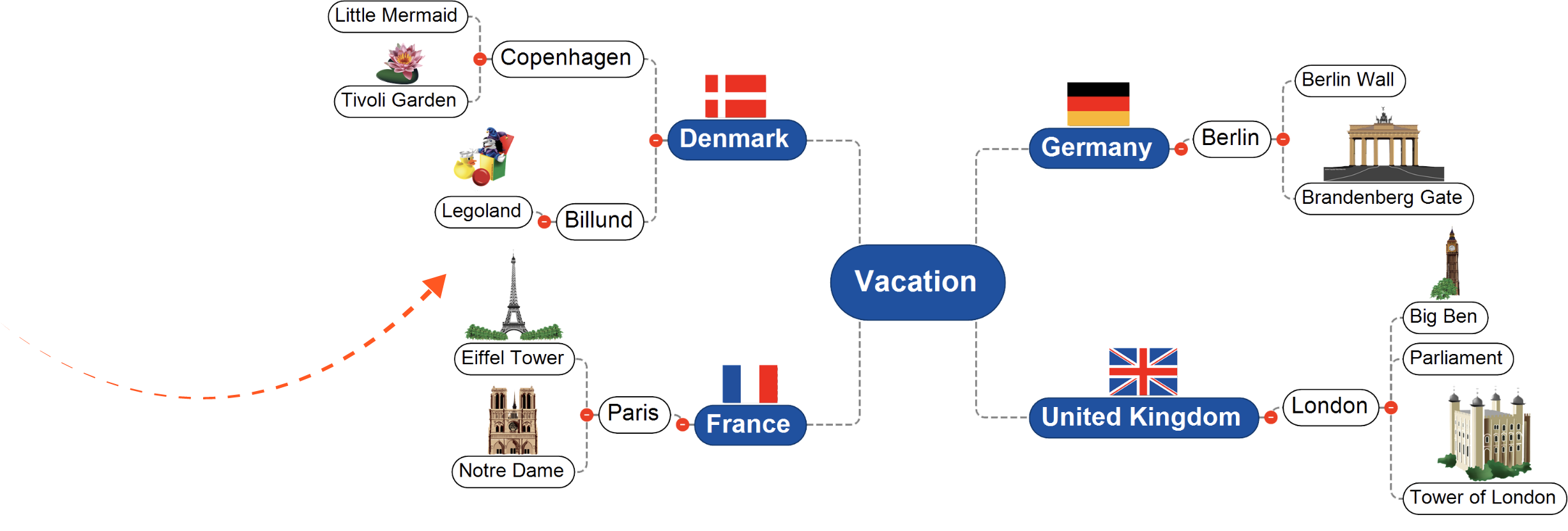
Ta den samme informasjonen og se den på Tankekart. Du kan nå få oversikt over informasjonen mye raskere og huske dataene mye lettere.
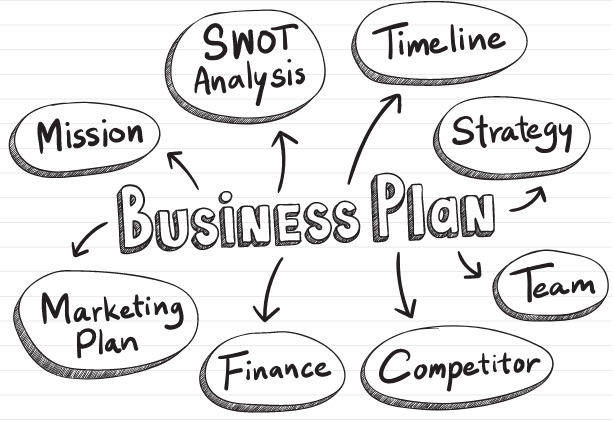
Tankekart er perfekt for:
- Brainstorming og visualisering av konsepter
- Presentere og formidle ideer
- Grafiske arrangører og elektroniske notatbøker
- Å kjøre møter mer effektivt
- Skisserer rapporter og dokumenter
- Forenkling av oppgave- og prosjektledelse
- Skrive essays
Hvis du leter etter Tankekart eksempler, eller programvare for å lage et Tankekart, må du sjekke ut denne Tankekart programvare anmeldelsen.
Teorien bak tankekart
Når du studerer hjernens funksjonalitet og minnesystem, vil du innse den ekstraordinære omfanget av kapasiteten og potensialet. Mind Map er et verktøy som brukes til å lokke, glede, stimulere og utfordre deg. Du vil oppdage noen forbløffende fakta om hjernen din og dens funksjon, og du vil ta de første store trinnene på veien til sinnsfrihet.

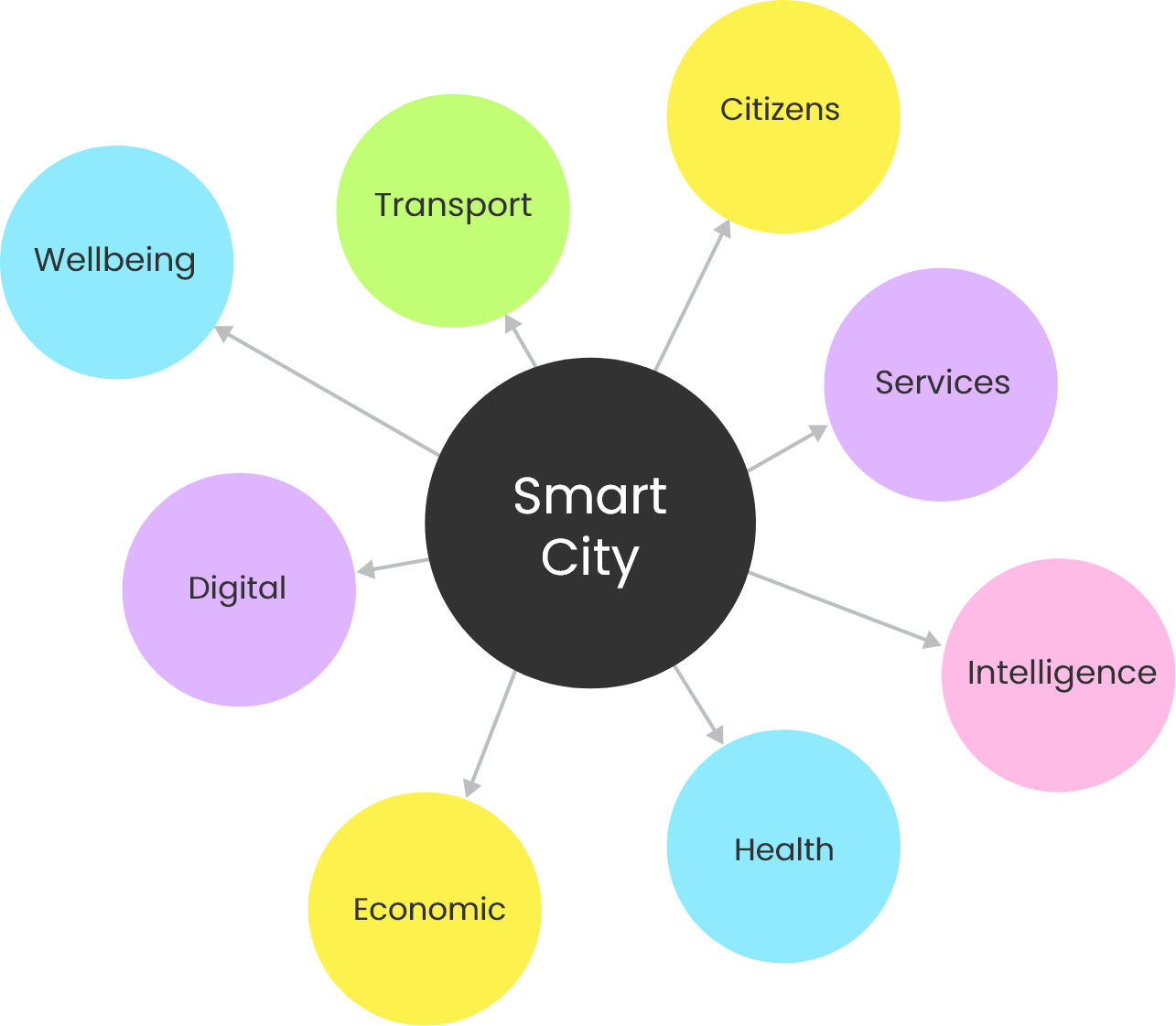
Hvordan Tankekart utnytter hjernens kraft
Et tankekart er en svært effektiv måte å få informasjon inn og ut av hjernen din – det er et kreativt og logisk middel for notering som bokstavelig talt ‘kartlegger’ ideene dine.
Alle tankekart har noen ting til felles. De har en naturlig organisasjonsstruktur som utstråler fra sentrum og bruker linjer, symboler, ord, farger og bilder etter enkle, hjernevennlige konsepter. Tankekart konverterer en lang liste med monoton informasjon til et fargerikt, minneverdig og høyt organisert diagram som fungerer i tråd med hjernens naturlige måte å gjøre ting på.
En enkel måte å forstå et tankekart på er å sammenligne det med et kart over en by. Sentrum representerer hovedideen; hovedveiene som fører fra sentrum representerer hovedtankene i tankeprosessen din; sekundære veier eller grener representerer dine sekundære tanker, og så videre. Spesielle bilder eller former kan representere interessante landemerker eller spesielt relevante ideer.
Tankekart er det ytre speilet i din egen strålende eller naturlige tenkning, tilrettelagt av en kraftig grafisk prosess, som gir den universelle nøkkelen for å låse opp hjernens dynamiske potensial.
De fem essensielle egenskapene til tankekart legging:
- Hovedideen, emnet eller fokuset krystalliseres i et sentralt bilde
- Hovedtemaene utstråler fra det sentrale bildet som ‘grener’
- Grenene består av et nøkkelbilde eller stikkord tegnet eller skrevet ut på den tilhørende linjen
- Temaer av mindre betydning blir representert som ‘grener’ av den aktuelle grenen
- Grenene danner en sammenhengende nodal struktur
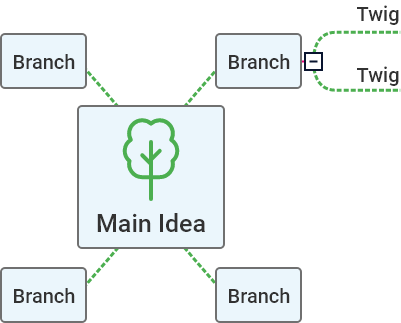
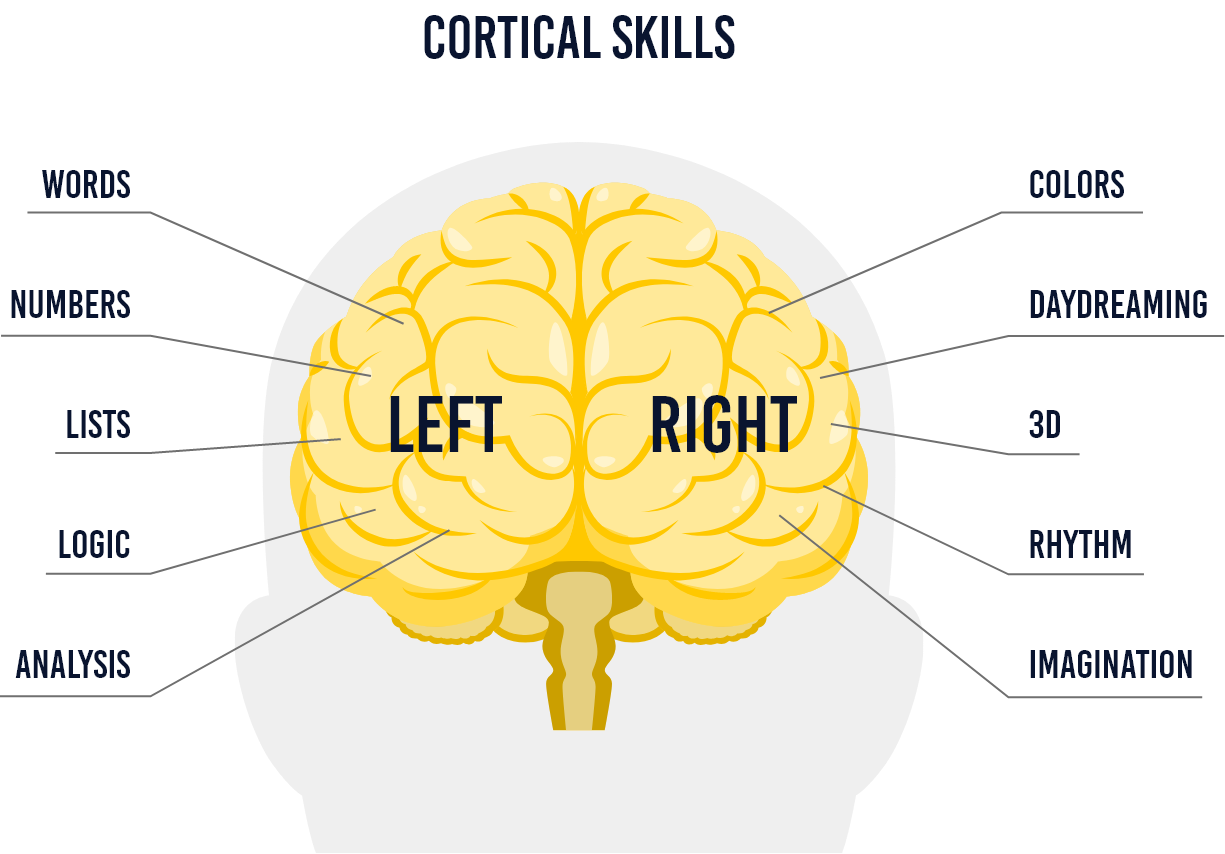
Hjernens naturlige arkitektur og grundlaget for Mind maps
Nesten det øyeblikket Tankekartet ble tatt i bruk, bekreftet en annen viktig vitenskapelig forskning deres gyldighet. Dr. Roger Sperry, som vant Nobelprisen for sin forskning, bekreftet at hjernebarkens ‘tenkende hette’ ble delt inn i to store halvkuler som utførte intellektuelle oppgaver kalt kortikale ferdigheter. Oppgavene inkluderte: Logikk, Rytme, Linjer, Farge, Lister, Dagdrømmer, Tall, Fantasi, Word, Gestalt. Hjernens venstre halvkule er mer logisk, mens høyre side er mer kreativ.
Enkel Tankekart-tre
Sperrys egen forskning bekræftede, at jo mere disse kortikale færdigheder blev integreret, jo bedre præsterede hjernen. Med Mind mapping® træner og bruger du ikke kun helt grundlæggende hukommelsesevner – du aktiverer også begge hjernehalvdele, hvilket gør din tænkning mere overskuelig, struktureret og velorganiseret.
Et Mind map gør konsekvent brug af fantasi, association og lokation. Man kan betragte et Mind map som det ultimative tænkeredskab, fordi det konstant aktiverer begge hjernehalvdele.
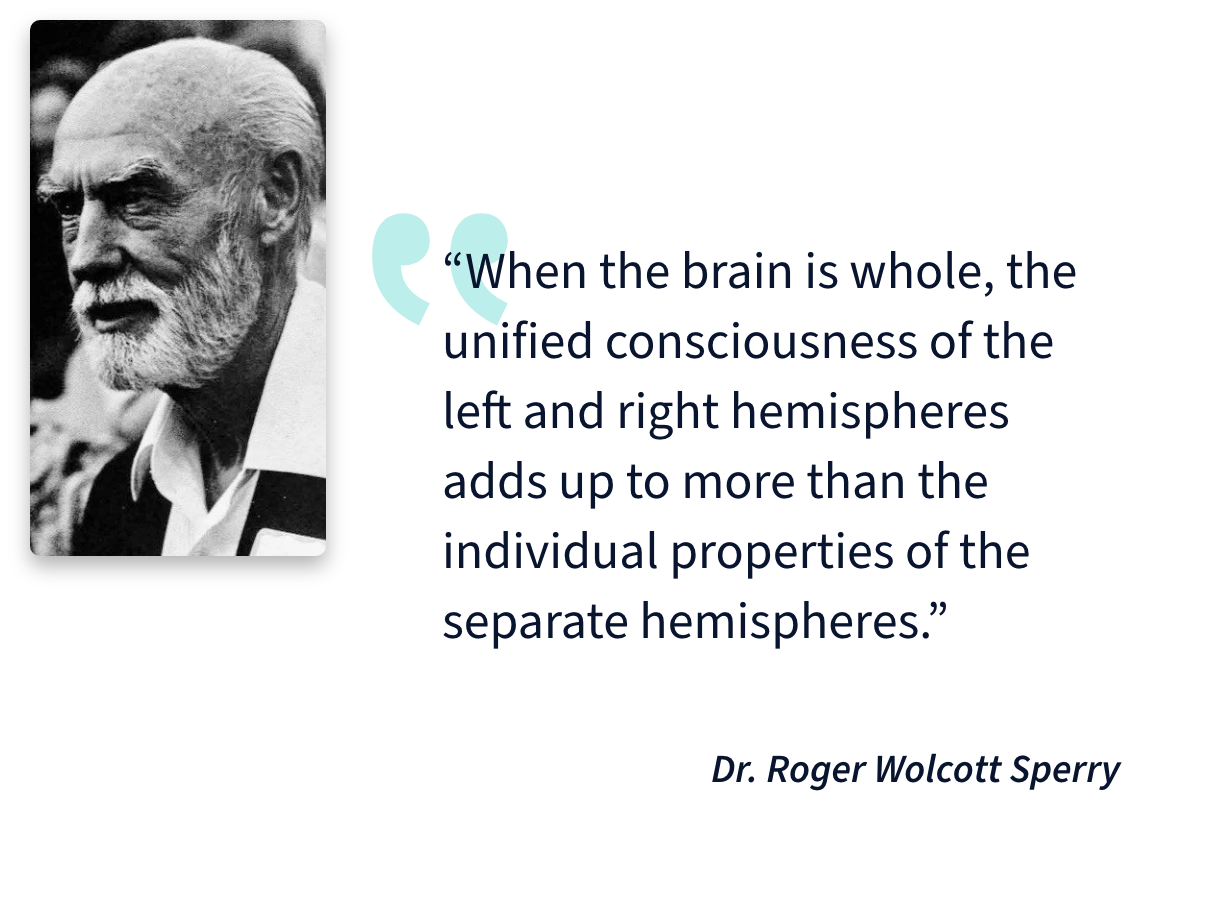
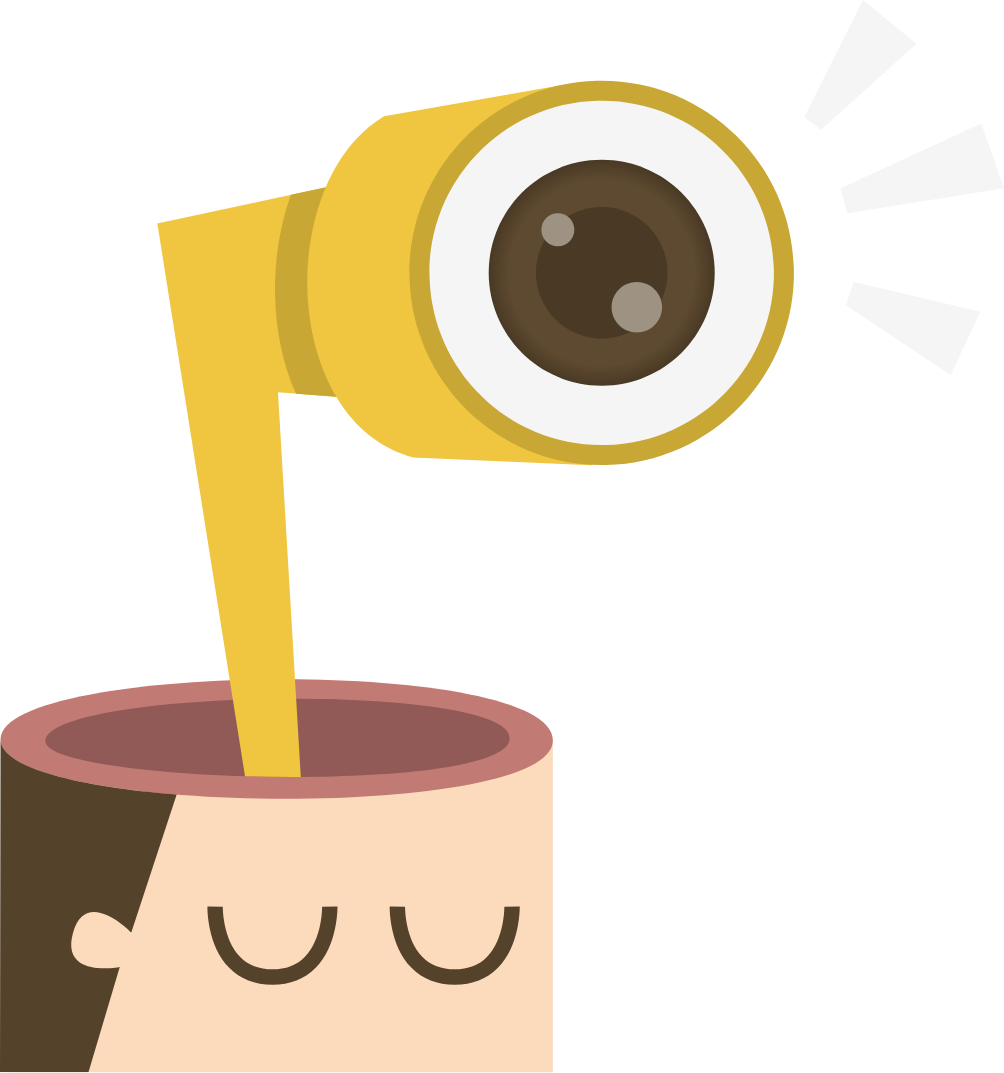
Bildenes makt
Sperrys egen forskning bekreftet at jo mer disse korte ferdighetene ble integrert, jo mer økte hjernens ytelse. Når Mind Mapping® trener og utøver du ikke bare de grunnleggende minne kreftene, men du aktiverer også begge halvkuler, noe som forbedrer klarheten, strukturen og organisasjonen av din tenkning.
Mind Map er enda kraftigere med bruk av alle venstre og høyre hjernepåfyllingsverktøy, som forbedrer klarheten, strukturen og organisasjonen av din tenkning. Og fordi Mind Map konstruktivt bruker verktøyene Imagination, Association and Location, så vel som verktøyene til venstre og høyre hjerne, kan du vurdere Mind Map som det ultimate tenkeverktøyet som inkluderer alle viktige og potente måter å tenke på i din egen struktur.
Tony Buzan og tankekart
Mennesket har laget grafiske avbildninger med sentrale bilder og utstrålende linjer i mange århundrer, men britiske Tony Buzan – forfatteren av en rekke bøker om psykologiske emner – hevder han er opphavsmannen til dagens tankekart. Argumentet hans er at tradisjonelle strukturer krever at lesere leser opplysningene fra venstre mot høyre og ovenfra og ned, derimot er hjernens naturlige funksjon å skanne hele siden. Buzan trekker dessuten på alminnelige antagelser om hjernehalvdelene til å anbefale tankekart istedenfor andre former for notering. Tony Buzan eier en rekke registrerte varemerker innenfor tankekart.
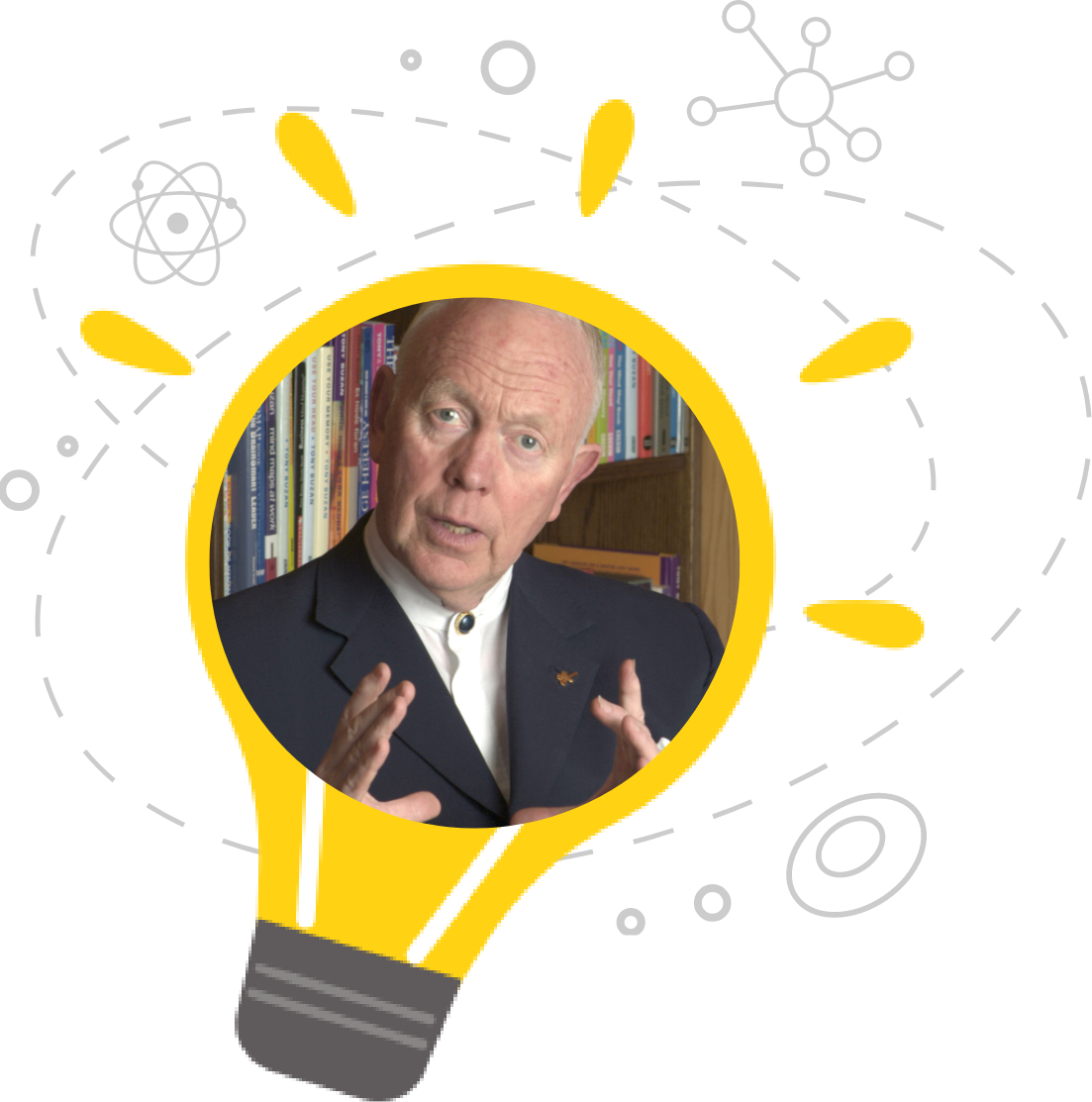
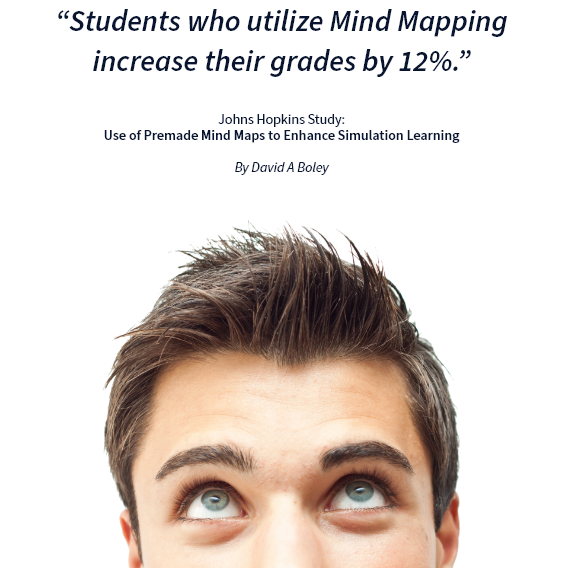
Er tankekart effektiv?
A Johns Hopkins studien indikerer at studenter som bruker Tankekart, øker karakterene sine med 12%.
Det er også bevist at tankekart er nyttig for dyslektikere og autistiske studenter for bedre å forstå konsepter og strategier. Faktisk sier The British Dyslexia Association: “Dyslektikere sliter med sitt talte og / eller skriftspråk, etter instruksjoner, dårlig konsentrasjon og gjennomføring av analytiske eller logiske oppgaver. Strategier som tankekart er anerkjent som verdifulle læringsverktøy.”
Lag tankekartet ditt i dag!
Vanlige spørsmål om tankekart
Tankekart er en visuell metode for å organisere informasjon, idéer eller oppgaver rundt et sentralt tema. Det innebærer å lage et diagram hvor beslektede idéer kan utvikles, noe som tilsvarer måten hjernen behandler informasjon på.
Tankekart speiler hjernens naturlige måte å tenke på. Dette stimulerer både logisk og kreativ tenking ved å sette sammen visuelle hjelpemidler, nøkkelord og forbindelser, noe som kan forbedre minnet, gjøre ting tydeligere og skaper idéer.
- Tydelighet: Bidrar til å strukturere komplekse idéer til et enkelt, visuelt format.
- Kreativitet: Oppfordrer til fri tankevirksomhet og nyskapende problemløsning.
- Fokus: Holder tankene organisert rundt et sentralt tema.
- Effektivitet: Sparer tid ved idémyldring, planlegging eller undersøkelser.
- Hukommelse: Den visuelle og hierarkiske metoden gjør det enklere å huske.
- Personlig organisering: Planlegg dagen, sett deg mål, eller hold orden på oppgavelister.
- Beslutningstaking: Sett opp fordeler og ulemper, eller se på alternativer.
- Læring: Skriv notater, lag sammendrag av bøker, eller se gjennom konsepter.
- Problemløsning: Bryt ned utfordringer til overkommelige enkelttrinn.
- Arrangementsplanlegging: Sett opp detaljer for fester, turer eller andre personlige prosjekter.
- Strategisk planlegging: Sett opp mål, SWOT-analyser og vekststrategier.
- Prosjektledelse: Planlegg oppgaver, tidslinjer og ressurser visuelt.
- Idémyldring: Lag og organiser idéer på møter.
- Samarbeid i team: Del og finpuss idéer i grupper.
- Presentasjoner: Lag visuelle hjelpemidler som tydeliggjør kompleks informasjon.
Helt klart. Tankekart er et kraftig verktøy for kreative fagpersoner, som skribenter, designere og markedsførere. Det bidrar til idémyldring, innholdsplanlegging, kartlegging og visuell organisering av idéer for å starte innovasjon.
- Elever: Bruk det for å skrive notater, lese til eksamen eller finne idéer til oppgaver.
- Lærere: Planlegg timer, utvikle pensum eller lag motiverende klasseaktiviteter.
- Forelder: Hjelp barna med å organisere leksearbeid, prosjekter eller daglige rutiner.
Du kan lage tankekart med penn og papir, men digitale verktøy kan forbedre prosessen. Programvare har funksjoner som dra og slipp, oppgaveintegrasjon og samarbeid. Noen eksempler:
- MindView
- MindManager
- Miro
Ja! Tankekart hjelper enkeltpersoner og team med å holde fokus, prioritere oppgaver og visualisere arbeidsflyten. Ved å bryte ned komplekse idéer til overkommelige bestanddeler kan man øke produktiviteten.
Ja, tankekart er et fantastisk verktøy for barn. Det gjør læringen morsom og interaktiv og hjelper dem med å organisere tankene visuelt, øker forståelsen og bidrar til kreativiteten.
- For mange detaljer: Store kart kan bli rotete uten riktig organisering.
- Subjektivitet: Forskjellige personer kan tolke samme tankekart ulikt.
- Læringskurve: Begynnere kan trenge litt øvelse på å lage effektive kart.
- Begynn med et tydelige og sentralt tema eller mål.
- Bruk farger, bilder og symboler for å huske bedre.
- Hold forgreningene konsise med enkle nøkkelord eller korte fraser.
- Bruk hierarki for å organisere underemner logisk.
- Se over og juster kartet jevnlig.
Det kommer an på hva man selv liker, og konteksten. Tankekart er mer visuelt og involverende, noe som gjør det perfekt til idémyldring og planlegging av det store bildet. Tradisjonell notatskriving kan passe bedre til lineær og detaljert informasjon.
- Målsetting og personlig utvikling.
- Forretningsstrategier og markedsføringskampanjer.
- Akademiske prosjekter og hjelpemidler til studier.
- Arrangements- og prosjektplanlegging.
- Kreative oppgaver som skriving, kunst og design.
I en stadig mer kompleks verden kan tankekart tilby en enkel og visuell måte å behandle og organisere informasjon på. De kan tilpasses til personlig, pedagogisk og profesjonell bruk, noe som gjør det til et allsidig verktøy for moderne produktivitet og kreativitet.
